ER-residential Nogo-B accelerates NAFLD-associated HCC mediated by metabolic reprogramming of oxLDL lipophagy
- PMID: 31358770
- PMCID: PMC6662851
- DOI: 10.1038/s41467-019-11274-x
ER-residential Nogo-B accelerates NAFLD-associated HCC mediated by metabolic reprogramming of oxLDL lipophagy
Abstract
Non-alcoholic fatty liver disease (NAFLD) is the hepatic manifestation of the metabolic syndrome that elevates the risk of hepatocellular carcinoma (HCC). Although alteration of lipid metabolism has been increasingly recognized as a hallmark of cancer cells, the deregulated metabolic modulation of HCC cells in the NAFLD progression remains obscure. Here, we discovers an endoplasmic reticulum-residential protein, Nogo-B, as a highly expressed metabolic modulator in both murine and human NAFLD-associated HCCs, which accelerates high-fat, high-carbohydrate diet-induced metabolic dysfunction and tumorigenicity. Mechanistically, CD36-mediated oxLDL uptake triggers CEBPβ expression to directly upregulate Nogo-B, which interacts with ATG5 to promote lipophagy leading to lysophosphatidic acid-enhanced YAP oncogenic activity. This CD36-Nogo-B-YAP pathway consequently reprograms oxLDL metabolism and induces carcinogenetic signaling for NAFLD-associated HCCs. Targeting the Nogo-B pathway may represent a therapeutic strategy for HCC arising from the metabolic syndrome.
Conflict of interest statement
The authors declare no competing interests.
Figures
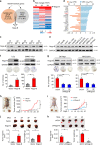
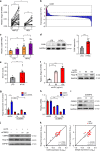
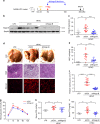

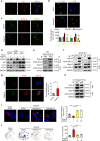
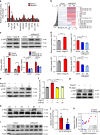
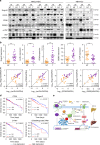
Similar articles
-
O-GlcNAc transferase promotes fatty liver-associated liver cancer through inducing palmitic acid and activating endoplasmic reticulum stress.J Hepatol. 2017 Aug;67(2):310-320. doi: 10.1016/j.jhep.2017.03.017. Epub 2017 Mar 25. J Hepatol. 2017. PMID: 28347804
-
Molecular Mechanisms: Connections between Nonalcoholic Fatty Liver Disease, Steatohepatitis and Hepatocellular Carcinoma.Int J Mol Sci. 2020 Feb 23;21(4):1525. doi: 10.3390/ijms21041525. Int J Mol Sci. 2020. PMID: 32102237 Free PMC article. Review.
-
Knockout of the Nogo-B Gene Attenuates Tumor Growth and Metastasis in Hepatocellular Carcinoma.Neoplasia. 2017 Jul;19(7):583-593. doi: 10.1016/j.neo.2017.02.007. Epub 2017 Jun 17. Neoplasia. 2017. PMID: 28628795 Free PMC article.
-
Molecular profiling of nonalcoholic fatty liver disease-associated hepatocellular carcinoma using SB transposon mutagenesis.Proc Natl Acad Sci U S A. 2018 Oct 30;115(44):E10417-E10426. doi: 10.1073/pnas.1808968115. Epub 2018 Oct 16. Proc Natl Acad Sci U S A. 2018. PMID: 30327349 Free PMC article.
-
Autophagy, NAFLD and NAFLD-Related HCC.Adv Exp Med Biol. 2018;1061:127-138. doi: 10.1007/978-981-10-8684-7_10. Adv Exp Med Biol. 2018. PMID: 29956211 Review.
Cited by
-
[Changes of YAP activity at the early stage of nonalcoholic steatohepatitis and its spatiotemporal relationship with ductular reaction in mice].Nan Fang Yi Ke Da Xue Xue Bao. 2022 Sep 20;42(9):1324-1334. doi: 10.12122/j.issn.1673-4254.2022.09.08. Nan Fang Yi Ke Da Xue Xue Bao. 2022. PMID: 36210705 Free PMC article. Chinese.
-
A feedback loop between NONHSAT024276 and PTBP1 inhibits tumor progression and glycolysis in HCC by increasing the PKM1/PKM2 ratio.Cancer Sci. 2023 Apr;114(4):1519-1540. doi: 10.1111/cas.15697. Epub 2022 Dec 27. Cancer Sci. 2023. PMID: 36529521 Free PMC article.
-
Involvement of LDL and ox-LDL in Cancer Development and Its Therapeutical Potential.Front Oncol. 2022 Feb 16;12:803473. doi: 10.3389/fonc.2022.803473. eCollection 2022. Front Oncol. 2022. PMID: 35251975 Free PMC article. Review.
-
The Emerging Role of MicroRNAs in NAFLD: Highlight of MicroRNA-29a in Modulating Oxidative Stress, Inflammation, and Beyond.Cells. 2020 Apr 22;9(4):1041. doi: 10.3390/cells9041041. Cells. 2020. PMID: 32331364 Free PMC article. Review.
-
Inhibition of Nogo-B reduces the progression of pancreatic cancer by regulation NF-κB/GLUT1 and SREBP1 pathways.iScience. 2024 Apr 12;27(5):109741. doi: 10.1016/j.isci.2024.109741. eCollection 2024 May 17. iScience. 2024. PMID: 38706871 Free PMC article.
References
Publication types
MeSH terms
Substances
LinkOut - more resources
Full Text Sources
Medical
Molecular Biology Databases

